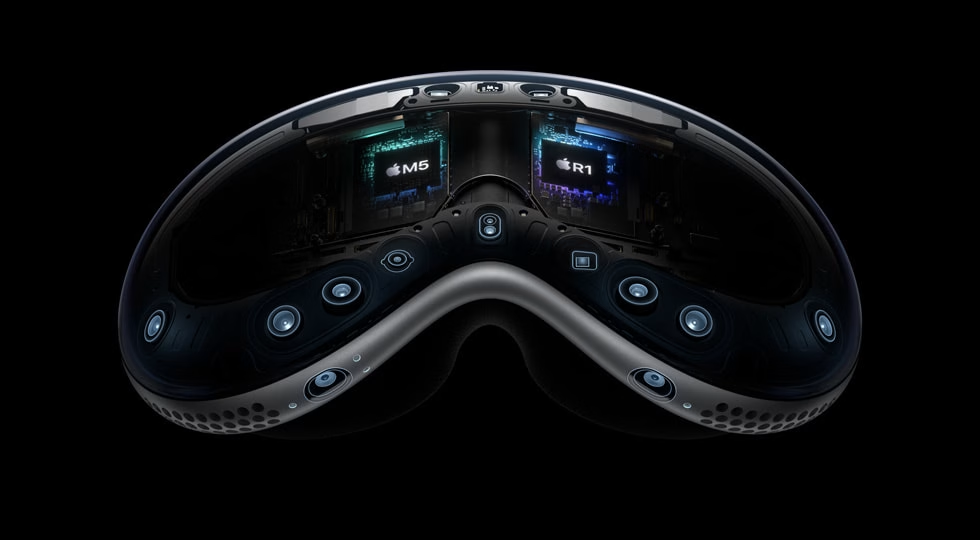Breaking news for spatial computing enthusiasts: Apple has officially rolled out a significant spec bump to its Vision Pro headset, integrating the powerful M5 chip for dramatically enhanced performance. This isn't just a minor refresh; it’s a strategic move to supercharge the platform, particularly for advanced software and gaming, making the "ultimate spatial computer" even more capable than its M2-powered predecessor. The update, announced quietly on October 15, 2025, aligns with the launch of new M5 editions of the 14-inch MacBook Pro and iPad Pro, signaling Apple's commitment to its next-generation silicon across its high-end devices.
Initially introduced in February 2024 with the M2 chip, the Vision Pro was always a marvel of engineering, if a bit... heavy. But hey, it was first-gen, right? Now, with the M5 onboard, Apple's addressing some critical performance bottlenecks that developers and early adopters highlighted, pushing the boundaries of what spatial computing can actually deliver.
The M5 Advantage: A New Era for Spatial Performance

Think about what this means for actual usage. Spatial apps, particularly those demanding complex 3D rendering or real-time object manipulation, should see a noticeable boost. Imagine designing intricate architectural models directly in your living room, or surgeons practicing complex procedures with even greater fidelity. And for gamers? This could be a game-changer. Hardware-accelerated ray tracing becomes a more viable reality, and higher frame rates – up to 120Hz in select applications – will make immersive experiences even smoother. Don't we all want less lag in our spatial apps? Seems like Apple's listening.
Beyond Raw Power: Comfort and Software Synergies
It's not all just about silicon, though. Apple also introduced a more comfortable Dual Knit Band with this update. While the overall weight of the Vision Pro remains largely unchanged (still in that 600-650g range), improved weight distribution and breathability from the new band should make longer sessions much more tolerable. Because let's be honest, wearing any headset for extended periods can be a bit of a neck workout. Any improvement here is absolutely welcome.
On the software front, the updated Vision Pro ships with visionOS 2.1, with a free update to visionOS 3 slated for December 2025. This future-proofing is smart, as visionOS 3 is expected to bring M5-optimized features, including better multi-app spatial layouts and even more seamless integration with your Mac and iPad. It's all about making the ecosystem feel, well, more cohesive. This tighter integration, and the raw power of the M5, should unlock real-time ray tracing for developers, enhancing AR/VR workflows considerably.
Pricing, Availability, and Market Context
Pre-orders kicked off on October 15, 2025, with shipping commencing October 22 in key markets like the US, Canada, UK, and Australia. A staggered global rollout means Asia-Pacific markets like China and Japan will see availability starting November 1, with a full global push by the end of November.
This mid-cycle refresh comes amidst a broader tech landscape. The original Vision Pro, while groundbreaking, faced challenges like its high price point and perceived bulk, leading to slower-than-expected initial sales. This M5 update is Apple's clear response, targeting professional users and developers who demand peak performance for demanding applications. It positions Vision Pro firmly as a premium, performance-oriented device, differing significantly from more consumer-focused (and much cheaper) alternatives like Meta's Quest 3S. Is it enough to significantly move the needle? Analysts, like IDC, are cautiously optimistic, predicting a 20-30% increase in adoption within professional markets. That's not a full consumer surge, but it's progress.
Expert and Community Reactions: A Nuanced View
The announcement has garnered a mixed, though largely positive, reaction across the tech community. Experts like Ming-Chi Kuo called it a "necessary refresh to compete in XR," though he also noted its "limited impact without price cuts." Mark Gurman, ever the Apple insider, praised the M5 for "closing the gap with PC-level gaming," suggesting stronger developer interest might follow. It's an evolutionary step, not a revolutionary one, but a vital one for the platform’s longevity.
On social media and developer forums, the sentiment is similar. Users are excited for better gaming and smoother spatial apps. "Finally, no more lag!" exclaimed one Reddit user. Many acknowledge the continued high price point remains a barrier for mainstream consumers, but professional users, particularly those eyeing the device for design or advanced training, seem genuinely thrilled by the performance prospects. Early adopters who beta-tested the M5 iterations cited "noticeable speed boosts." And that makes sense.
This update effectively solidifies the Vision Pro’s position as a high-end spatial computing platform. While rumors of a lighter, more consumer-friendly "Vision" headset persist (slated, perhaps, for 2026), the M5 Vision Pro is here now. It's Apple's clear statement: spatial computing is serious business, and they're bringing serious power to the table. The question now is, will developers and enterprises fully leverage this newfound muscle? We're certainly watching closely to see what new experiences the M5 unlocks.
